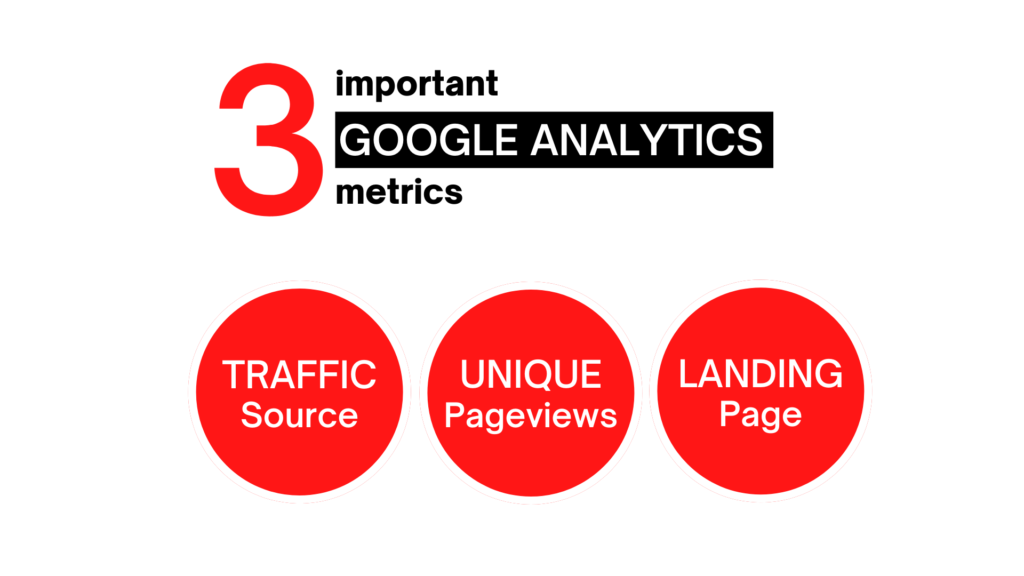When it comes to growing your business online, your website is one of the most important factors to take into consideration. But just having a website doesn’t guarantee success, and as a website owner, you probably already know that analyzing its performance is critical. But how do you do it?
Google Analytics is a great way to track your metrics, but it can also get overwhelming very quickly if you don’t know what to look for. Luckily, that’s what we’re here for. Keep reading to find out the top three key metrics you should be looking at to see how your site is doing.
How To Use Google Analytics To Analyze Your Website

There’s no shortage of KPIs when it comes to tracking your website performance, but there are a few that can offer you the right insight you need to determine exactly how effective your website is. Here are the most important dimensions and metrics Google Analytics has to offer for your website.
1. Traffic Source
A good place to start with metrics is by tracking the visitors to your website. While overall traffic is a valuable metric, something that might be more useful is to understand where your visitors are coming from.
Traffic source is a dimension that gives you this exact information. In addition, the medium dimension also allows you to find out the means through which a user reached your website. This includes:
- Direct traffic. Direct traffic includes users who directly go to your website URL or those who click on a link to your website.
- Organic traffic. Organic users are led to your website via a search engine result.
- Referred traffic. Referred traffic refers to the people who find your website by clicking on a backlink from another website.
- Paid search traffic. Paid search traffic is when the user clicks on a paid advertisement, which then takes them to your landing page.
- Email traffic. Email traffic is a result of users who reach your website by clicking on a link in an email, usually in a CTA.
2. Unique Pageviews
Tracking your pageviews metrics is a great way to track page performance. Pageview refers to the number of times a page is loaded by a website visitor. Apart from this, however, the unique pageviews metric can help business owners gain further insight into customer behaviour and preference.
Unique pageviews only count a page as being loaded one time every session, since there is no guarantee that the user is actually consuming the information every time they load it. Instead, find out which pages are used the most by visitors and supplementing that information with the average time on page metric will prove much more valuable.
3. Landing Page
Tracking your page views and pages per session metrics is important, but a crucial dimension for website analysis is the landing page. This is the first page in a session and tells you where the user landed on your website.
Two KPIs you can use in conjunction with the landing page dimension are the bounce rate metric and the second-page dimension. This will allow you to get a much better understanding of user intent since you’ll know where they’re going after viewing your landing page.
There’s a lot that goes into keeping a business afloat online, and designing your website is just the start of it. If you find it difficult to manage your digital presence while running your business, why not leave it to the professionals? Get in touch with The Best Media today to see how we can help! Click here to get your free consultation.






